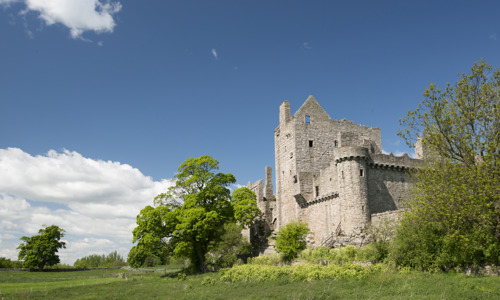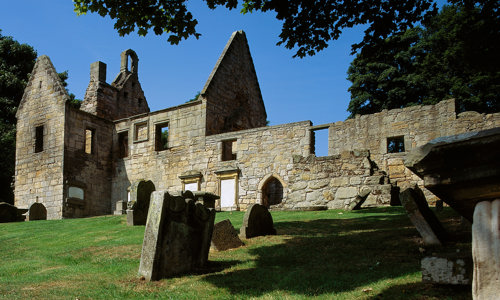History
House of the holy relics
On 9 May, 1241 a fine cross was found on the site of the Cross Kirk. Soon after, a stone urn was found on the same site, containing what some people thought to be the cremated remains of St Nicholas. The site was soon associated with miracles, and Alexander III paid for the first church on the site.
The church was built to house the cross and the shrine of the saint, and remained a pilgrimage centre until the early 1600s. It was a simple rectangle with a thick-walled, vaulted vestry to the north.
Excavations in 1924 found a stone cist under the shrine of St Nicholas, containing fragments of bone. This may have been the “saint’s grave” discovered in the 1200s.
Alteration and adaptation
The church was much-changed during the 500 years it was active as a place of worship:
- it became a house for Trinitarian friars in 1474. Cloister ranges and the west tower were probably added about this time
- in 1549 the Cross Kirk was burnt by the English, but seems to have been repaired two years later
- in 1656 the chancel was abandoned and a new east gable constructed. Galleries and three burial aisles were also added
The church was abandoned and unroofed in 1784, and by 1811 much of the south wall had fallen. But it is the best preserved urban friary in Scotland.
Cross Kirk may be a site of Bronze Age, early Christian and medieval religious value, and as such is an interesting example of the way in which different ages have interacted with remains of the past.
















